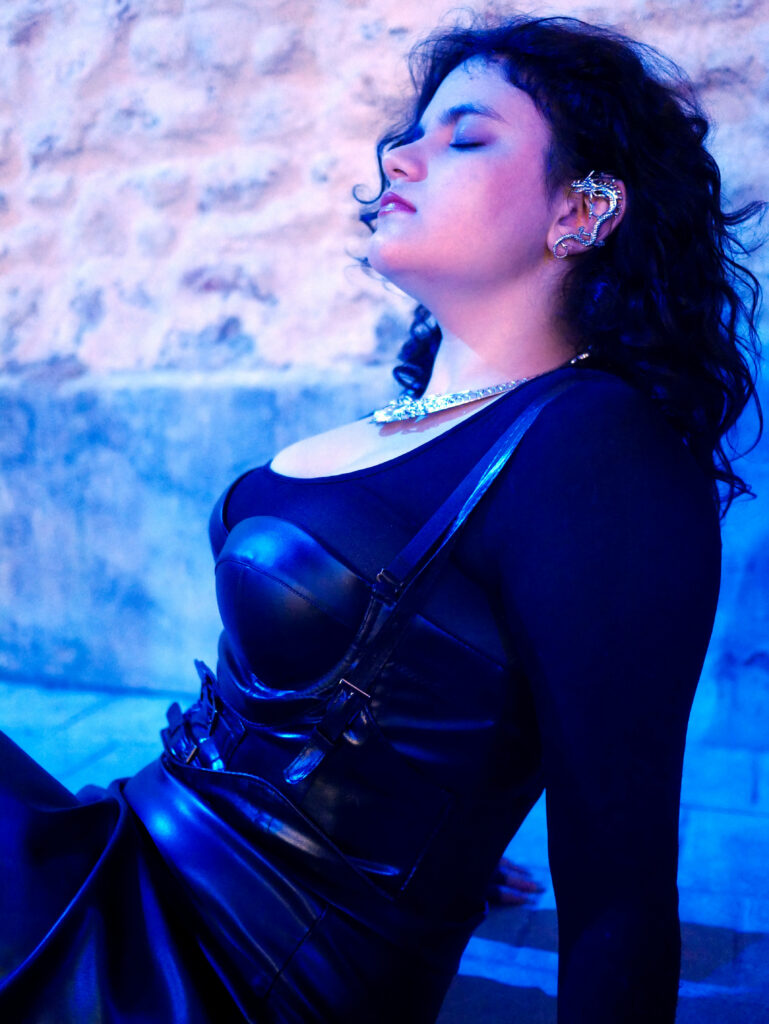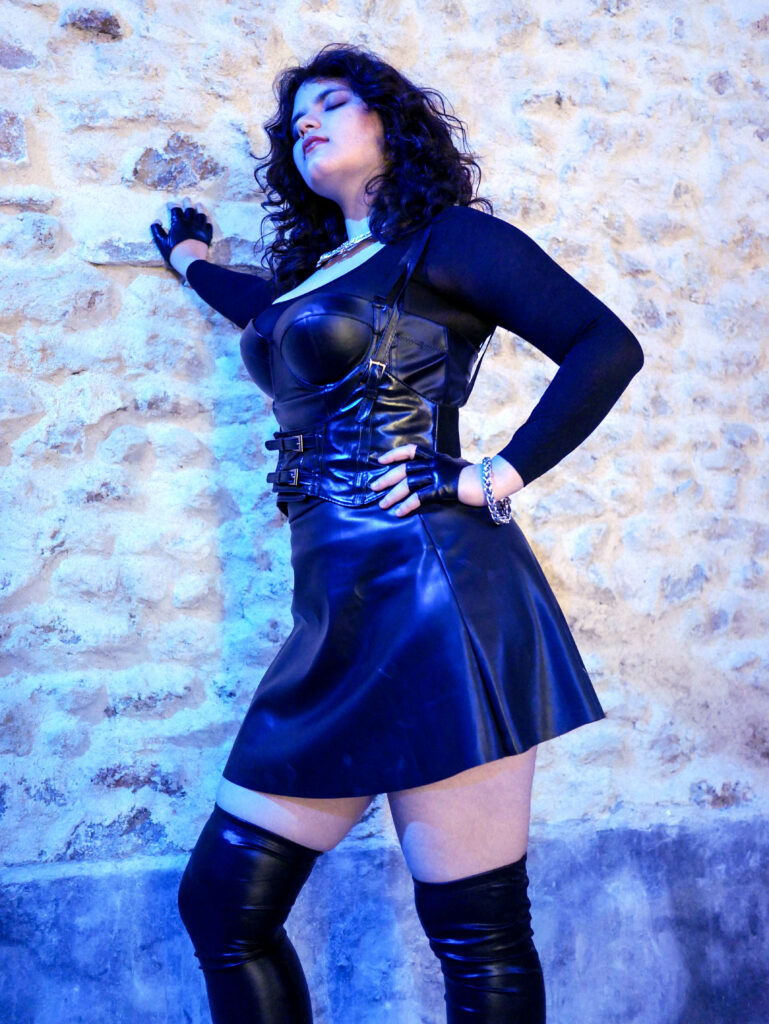Power Metal
POWER METAL
If you listen to an album by a “Power Metal” band, chances are you’ll hear:

- Fast, pounding, relentlessly EPIC double-kick drumming played at lightning speed. No stops.
- Furious-sounding, EPIC ten-minute shredding guitar solos with triple-layered harmonies.
- Mighty, uplifting, wailing EPIC melodic vocals. Absolutely none of that growly stuff…
- Rumbling, EPIC rapid-fire bass matching in a fury with the drummer’s double-kicks.
- Songs chronicling EPIC fantasy tales that wouldn’t sound too different from a D&D campaign, or maybe
a page ripped out of Lord of the Rings. Or hell, just sing proudly about the heavy metal itself. - An absolutely polished, crystal-clear EPIC production.
- Maybe some big, EPIC synths (actually, add a whole symphonic orchestra while we’re at it. Can’t have
enough EPIC-ness here). - Oh yeah, did we mention everything EPIC?
You get the idea. It’s a style of metal that is either regarded by many fans as the truest of them all or
argued by its detractors as the most ridiculous of them all. Play an album by Dragonforce or Edguy and
make your own decision.
However, since its inception, the above definition of power metal as an “epic and mighty” style of music
hasn’t always been the same and is often a heated argument of semantics between metalheads. What
we can say is that power metal has evolved and splintered off into many forms over the years, and its
meaning has changed and been re-developed over time. In the early 1980s, “power metal” was a term
used interchangeably with “thrash metal”, a term that even Pantera (yes “that” Pantera) championed
with a 1988 album bearing that title.
So… with all that being said, what exactly is power metal? And how has this term evolved over time?
Origination of the term “power metal”
The early 1980s saw a prominent shift in heavy music from the US and Europe. 1970s metal pioneers
like Black Sabbath, Motorhead and Judas Priest had inspired a new generation of bands, most notably
the UK’s New Wave of British Heavy Metal and a young collective of heavy bands from the United States
and Germany. These new bands played a faster, more energetic style compared to the traditional metal
bands of the 70s, combining the riffs of Black Sabbath with the speed and aggression of bands like
Motorhead, Accept and Judas Priest.
A few of the bands from this era included Manowar from New York, Anvil from Canada, Grave Digger
and Rage from Germany, and a young band from California by the name of Metallica.
So what was this new, faster style of metal called? Some of the press and the fans were calling it “speed
metal”; some were calling it “thrash metal”, while others were also calling it “power metal”. In the context
of the time, this newer, heavier music sounded more “powerful” compared to the older bands of the
1970s. So the definition made sense, right?
Over time, “thrash metal” and “power metal” began to take their own forms. Thrash began to evolve into
a more aggressive style with bands like Slayer, Testament and Kreator in the 1980s, while the more
melodic-sounding bands within this new generation were consistently being labelled “power metal”.
Thus, this was how and when the genres began to diverge.
Divergence
From the late 1980s, power metal began to splinter off into two regional branches: American power metal
(USPM) and European power metal.
The emergence of European power metal in the late 1980s and early 1990s would be the forerunner to
power metal as most would recognise it today. German bands Blind Guardian and Helloween and
Finland’s Stratovarius began to adopt a much cleaner melodic sound in their music and more
fantasy-style themes in their lyrics. Keyboards and symphonic elements were also not uncommon.
Helloween’s 1987 double album “Keeper of the Seven Keys” is often regarded as the first “European
power metal” recording in the modern context and is considered a major catalyst of the subgenre, along
with Blind Guardian’s 1990 album “Tales from the Twilight World”. Blind Guardian and Rhapsody of

Fire and Kamelot from the US would further develop this melodic style of metal music as it began to
influence more bands around the world.
American power metal sounded closer to the more traditional early-1980s sound and, despite its name,
was not limited only to American bands. It had a much more rawer, guitar-driven sound with fewer
reliances on keyboards, fantasy themes and orchestral elements than its emerging European
counterpart. Bands who would champion this style included Armoured Saint, Manilla Road, Sanctuary
and Manowar from the US, and Warlock, Running Wild and Grave Digger (who we mentioned earlier)
from Germany.
Sadly, the more traditional style of American power metal suffered a decline in popularity during the
1990s with the emergence of grunge, alternative rock and death metal.
The popularity of the more fantasy-style European power metal continued to increase during the 1990s and 2000s, however. This
would likely be the key factor in how and why the European sound began to lead the common
definition of “power metal”.
Continued successes European power metal continues to enjoy a healthy audience around the world, with new bands
emerging and combining new elements into the genre.
With its consistent appeal of fantasy themes, power metal has further diverged and crossed over into folk, pirate and Viking metal, with bands like Ensiferum, Trollfest and Korpiklaani sharing audiences in the power metal realm. In the 1990s, power
metal even had a lot of influence on death metal with bands like In Flames, Children of Bodom, and
Mors Principium Est.
Since the 2000s, the more traditional style of American power metal has enjoyed a significant
resurgence and has been embraced by younger audiences. This resurgence has led to many of the
older American Power Metal bands reforming and a new generation of bands taking the torch. This
recent wave of traditional power metal includes bands like Enforcer, Jenner, and Air Raid from Europe,
Widow, Seax, Skull Fist and Blade Killer from North America, and Australia’s Espionage, to name but
a few.
Liam Anthony
Idle Run band, AU.
